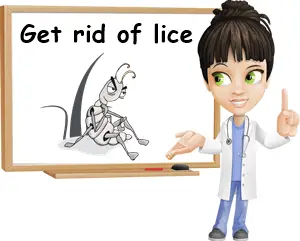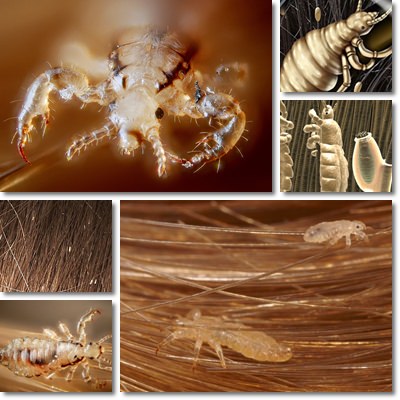Head lice is one of the most widespread infestation among children of school age. The most affected are children ages 3 to 12 as they lack knowledge concerning the way head lice are spread and are in the position to interact closely with other children infested with this tiny parasite.
Children with head lice are very likely to pass on the parasites to their family. The infestation is dreaded because the lice are quite difficult to get rid of. Fortunately, they do not transmit blood disease and generally do no pose serious health risks, just social exclusion.
What are head lice?
Head lice are tiny insects without wings. They are parasites by nature which means they rely on a host for survival. The species that parasitizes humans is called Pediculus humanus. The subspecies infesting the head is called Pediculus humanus capitis, or the head louse. This subspecies lives off human blood and other fluids such as sebum and the infestation it produces is known as pediculosis.

Where do head lice come from?
There are several thousand different species of lice, three of which inhabit humans. According to experts, head and body lice share a common ancestor which dates back millions of years.
Lice are parasitic insects, meaning they live off humans. They generally do not live much if they are separated from their host.
Head lice feed on the scalp by sucking blood, prefer one host and do not generally transmit disease.
They typically live about 1 month.
There are three cycles in the evolution of head lice.
1) Eggs. Head lice lay several eggs a day and attach them to the hair shaft, either at the base of the hair, near the scalp, or 10-15 cm down the hair shaft.
The female glues her eggs to the hair shaft by secreting a special kind of substance that acts like a strong glue binding the egg to the hair. Head lice eggs are oval and less than 1 mm long, transparent, shiny, tan or darker and may hatch in 7 to 9 days after being laid.
2) Nymphs. From the moment they hatch until they become adults, head lice are nymphs. During this developmental stage, nymphs molt three times until they become adult lice.
They are generally smaller than adults and feed on blood by piercing the scalp. They may complete their transition into adult lice in 8 to 24 days, depending on feeding conditions.
3) Adult lice. They are tiny, about 3 mm long parasitic insects without wings. Adult lice have one pair of eyes and one pair of antennae on their head and a mouth adapted to feeding on blood.
The head is connected to a segmented thorax with six short legs adapted to grasping and climbing on hair, but not jumping or walking. The thorax is connected to the abdomen, also segmented. Females are somewhat larger than males.

Frequently asked questions Head Lice
What color are head lice?
Head lice are light grey, almost whitish or light brown in color, but can successfully blend in if the color of one’s hair is lighter and may take on a reddish hue after feeding.
What color are head lice eggs?
Head lice eggs are somewhat transparent, lightly colored, but may turn white after the lice have hatched or if the eggs are no longer viable. They often look like tiny yellow or light brown dots attached along the length of the hair shaft.
How long does it take for head lice to appear?
A female can lay eggs almost as soon as her transition into adulthood ends.
How long does it take for head lice to disappear?
Getting rid of head lice is difficult and may take up to a couple of weeks in some cases.
How long does it take for head lice to spread to another person?
Depending on the degree of infestation, even the briefest contact such as a close hug or a kiss on the cheek can allow adult lice to climb one’s hair and parasitize them. Brushing our hair even once using a comb or brush used by a person with head lice is also enough to transfer them onto our head.
Myths and truths About Head Lice
1) Lice don’t like dirty hair more
Actually, it has been shown that the cleaner the hair, the easier it is for lice to climb onto it and attach their eggs to the hair shaft. When we don’t wash our hair for a couple of days, the oils produced by the sebaceous glands located in our scalp accumulate and start covering the length of the hair.
Oils are slippery even for lice which can’t grab onto the shaft too well.
Nevertheless, good personal hygiene which includes washing our hair as often as needed is useful in preventing head lice infestation.
2) Proximity to an infected person or their effects facilitates infestation
Hugging a person with head lice, using the same pillow, bed sheets, hairbrush, comb, hair accessories, even hat, scarf, helmet, cap, sleeping bag, jacket or towel can encourage the transfer of head lice onto your head. The lice only have to climb onto our hair to infect us.
3) Lice can survive very little without a host, but enough to find another
A person with head lice can drop some of them on their scarf or jacket for example. The lice can climb onto a nearby scarf or jacket and then onto the hair of another person, ensuring themselves a new host.
Keeping jackets and other clothing in a common area such as a check room or a coatroom is a reason why head lice spread so fast from one person to another.
Children are the most likely to have lice in the first place as well as to share indoor space, clothing checkrooms and other personal objects, so they are more at risk of an infestation.
4) There are no hair care products that actively prevent head lice infestation
You can’t really prevent getting head lice just as no product currently on the market can get rid of them after a single use. Usually, shampoos and other products for head lice all require repeated use to completely remove all parasites and their eggs.
5) Pets do not transmit head lice
Head lice are parasitic to humans, not other animals so you can’t get them from your dog or cat as you would fleas. The same goes for our pets: they cat get head lice from us.
6) Checking children’s hair regularly for head lice is recommended
It’s always wise to have an eye on our children when it comes to their hygiene. Checking their hair regularly for lice, dandruff, itchy scalp is just as important as making sure they brush their teeth and wash their hands and face.
It’s enough to just run a comb through their hair or massage their scalp while checking to see if everything in alright because head lice are best dealt with while they are still few.
Once there is a serious infestation, it may take some time to get rid of it, not to mention the risk of spreading it is higher. The following video explains how you can get rid of head lice and what general measures you should take to get rid of them. Afterwards, you can read about appropriate preventive measures to help avoid an infestation.
How to get rid of head lice?
Here are the most important steps to follow to get rid of head lice and their eggs and prevent reinfestation:
1) Use an appropriate hair product for lice
There is a wide range of products aimed at treating head lice infestation. They may come in the form of shampoos, lotions or various topical solutions and generally require several applications to fully eliminate the infestation, particularly the eggs which appear to be more resilient.
2) Wash pillows, bed sheets, towels, scarves, hair accessories
Brushes, combs, caps, helmets and any other products that may have come into contact with your hair to prevent reinfestation. It is recommended to wash them at 60 or even 90 degree Celsius for at least 15 minutes to destroy lice and their eggs.
3) Cut off hair if needed
It may prove difficult to get rid of all lice and their eggs from long hair, not to mention that longer hair is more prone to head lice infestation.
Cutting hair shorter is best for children in particular because it helps them enjoy better hygiene and lowers their risk of getting head lice again in the near future. Children will also benefit from learning not to share personal objects such as combs, hair ties, pillows or helmets.
4) Vacuum the house and disinfect the floors
Although head lice don’t live long without a host, the eggs may survive long enough on the carpet or even floor to to produce a reinfestation. Disinfect floors is a good solution for preventing this.
5) Benefit from essential oils use
Aromatic essential oils such as rosemary applied on the scalp and length of the hair shaft smooth hair cuticles and can make it harder for lice to attach to our hair. However, this will not prevent getting head lice altogether or eliminate them or their eggs completely because infestation if often the result of repeated and close contact with head lice and viable eggs.
